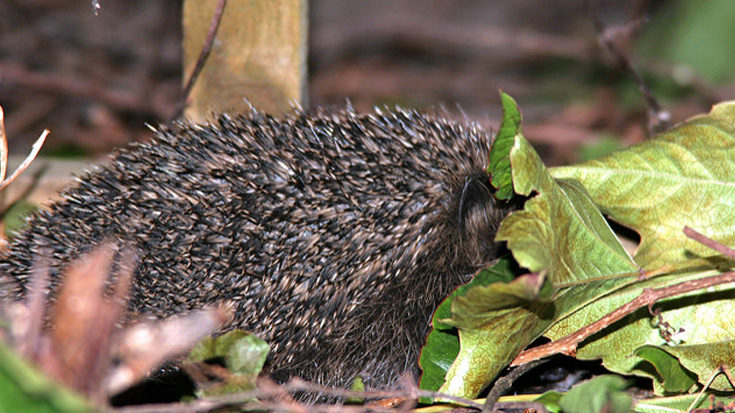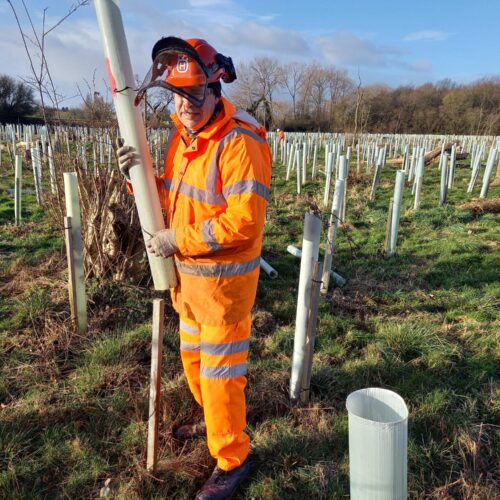Winter can be a struggle for most of us as the cold weather and frost creeps in, but some animals avoid it altogether by adopting survival techniques such as hibernation or migration. Winter is also a popular time for developers to undertake habitat clearance and management works because it is outside the breeding bird season. It is important that works scheduled during this season consider overwintering/hibernating reptiles, amphibians and mammals to avoid harm to these protected species.
Hibernation and torpor – what’s the difference?
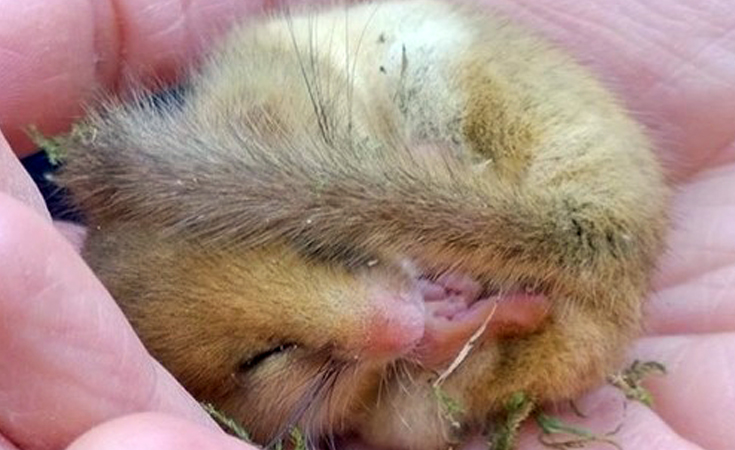
Hibernation and torpor are both tactics used by various animals to survive the winter. Hibernation is a voluntary state that an animal enters in order to conserve energy, survive when food is scarce and avoid facing the winter elements. In hibernation the body temperature, breathing rate, heart rate and metabolic rate is lowered in order to allow the animal to survive on low food supply and little movement. It is triggered by day length and hormone changes. In other words, it is a very deep sleep, that even the sound of strimmer’s cannot disturb!
Torpor is very similar to hibernation but instead is an involuntary state triggered by ambient temperature and the availability of food. Torpor is used for shorter periods of time and takes around 20 minutes to one hour to arouse from, including violent shaking and muscle concentrations. Dormice and bats go into torpor in cold weather, even during the summer months.
Species in torpor or hibernation will not wake up immediately due to their habitat being removed, or even if they are injured. If animals are disturbed from hibernation it can significantly decrease their chance of surviving the winter, as they will have to burn precious energy to warm up, move around and find another spot to hibernate or build a nest.
Where to look?
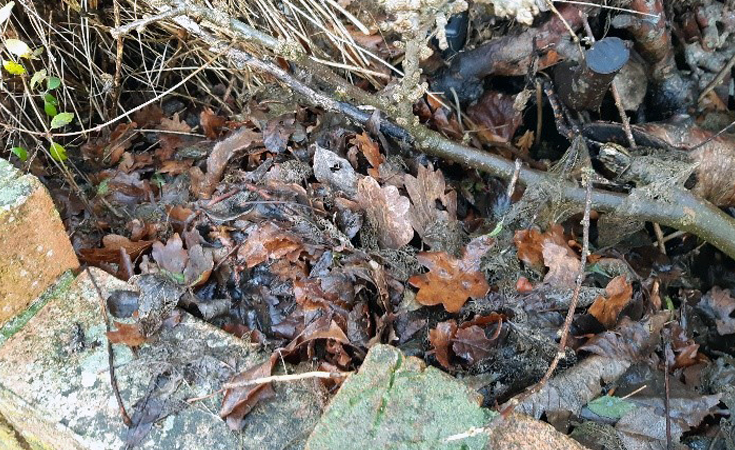
Ground hibernators
In winter, the most stable temperatures are at ground level. Both hedgehogs and dormice create hibernation nests on the ground and are therefore very vulnerable to injury or fatalities during vegetation removal or maintenance, because they take so long to arouse from hibernation.
Hedgehogs make their hibernation nests with lots of dry leaves, ideal places for hedgehogs are in woodlands or in hedgerows, under scrub or at edges of fields under log piles or piles of brash, or under refuges such as tiles or plastics.
Dormice hibernation nests are a tight woven ball of plant material, generally consisting of grass, honeysuckle, ferns, leaves or moss. They are found out in the open usually on woodland floors or hedgerows, scrub or close to tree cover.
Reptiles go into a unique type of hibernation called ‘brumation’ and they adopt this usually under log piles, in hedgerows or under scrub.
Amphibians can hibernate in damp leaf litter or anywhere dark and damp. Great crested newts can also hibernate at the bottom of ponds.
Reptile and dormouse surveys, new school proposal 2019
A school site in 2019 had recorded populations of grass snake with a possibility of dormice on site. For areas of grassland and scrub to be cleared, a two-stage approach was used: vegetation was initially cut down to 200mm in winter, after a Thomson ecologist had undertaken a fingertip search so that no ground disturbance would take place and suitable breeding bird habitat was also removed.
In April when the weather had warmed up, the vegetation was cut down to ground level and any reptiles found were re-located to a designated reptile receptor area. The majority of dormouse habitat was retained, but a section of hedgerow needed to be removed, this again was undertaken in a two-stage approach, so that, beforehand, the ground could be searched for hibernation nests by a Thomson ecologist.
Bats in buildings and trees
Bats hibernate in structures that have a stable temperature such as the cracks and crevices in buildings (external or internal structures), loft spaces, trees, caves and bridges. Our smallest bats in the UK can fit on the end of your thumb and can squeeze into some very small gaps.
Bat hibernation surveys Hampshire 2019
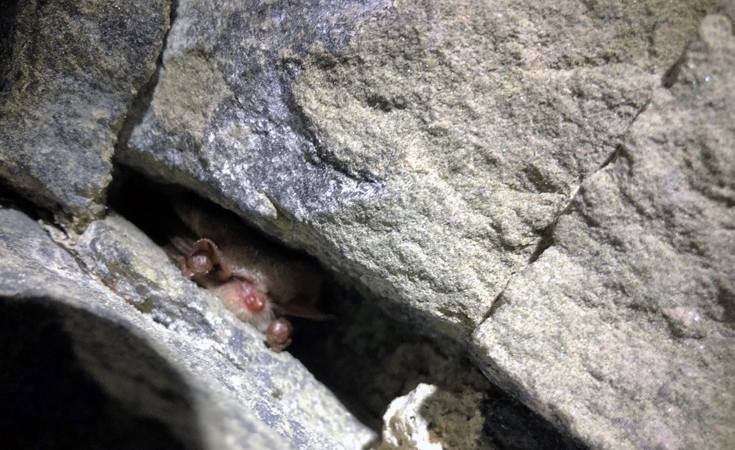
A church in Hampshire was recorded as having hibernation potential for bats. In December, three static monitoring devices and ‘tell-tale’ sheets were deployed to record bat activity and collect droppings within loft spaces and a bell tower. Two brown long-eared bat hibernation roosts were identified from bats in-situ, fresh droppings and recorded bat calls, and one pipistrelle hibernation roost in an outside porch. An EPSL was produced by Thomson and accepted by Natural England for the roof maintenance works to proceed which included several mitigation and enhancement measures for bats.
Wintering birds
Migration is another technique that can be used to survive the winter periods, and many birds migrate to the UK each year for this purpose. Certain habitat types that support populations of migratory species during the winter will be subject to a full assessment of the impact upon birds, as all wintering birds are protected under the Wildlife and Countryside Act 1981 (as amended).
Wintering bird surveys – Welsh docks
A single wind turbine generator was proposed at a dock in Wales. Thomson undertook wintering bird surveys including vantage point and walkover surveys, which were used to inform the Ecological Habitat Management Plan detailing ecological enhancements for breeding and wintering birds. This included a timetable to deliver compensation, manage the enhancements and deterrents for a least five years, post-construction, and liaise with the local authority to ensure planning conditions are being met.
How can Thomson help?
The team at Thomson have years of experience of identifying potential hibernation habitats and the species your work may affect. We can help guide clients through legislation that may affect their development and provide varied mitigation options in order to help you meet environmental compliance and proceed with your latest project. If you suspect your development may harbor overwintering animals, contact us and we’ll advise you on how to proceed.
